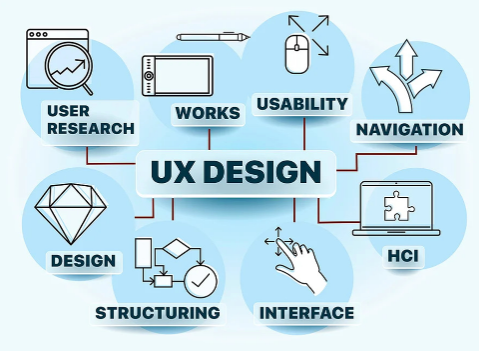In today’s rapidly evolving digital landscape, the success of startups hinges significantly on their ability to create intuitive and engaging user interfaces (UIs) and user experiences (UX). From the initial wireframes to the final product launch, the design of an interface can either make or break a startup’s reputation and growth.
As competition intensifies across various sectors, including healthcare, fintech, and crypto, startups need to leverage UX design essentials to create interfaces that cater to a diverse user base. This article explores the key elements of UX design that are crucial for crafting diverse startup interfaces.
Understanding the Importance of UX Design
User Experience (UX) design is a process dedicated to creating products that provide meaningful and relevant experiences to users. It encompasses the entire process of acquiring and integrating the product, including branding, design, usability, and function. For good UX design, startups need to collaborate with a startup design agency that specializes in creating interfaces that are both user-friendly and scalable.
Key Elements of UX Design for Diverse Interfaces
Creating diverse startup interfaces requires a thorough understanding of UX design essentials. Here are some key elements that startups should consider when designing their interfaces:
1. Research and User Personas
Before diving into the design process, it is crucial to conduct comprehensive research to understand the target audience. This involves gathering data about the users’ demographics, preferences, behaviors, and pain points. User personas help designers visualize the users’ needs and expectations, enabling them to design interfaces that cater to a diverse user base.
2. Information Architecture
A well-designed Information architecture (IA) helps users navigate the interface seamlessly, reducing the cognitive load and enhancing the overall user experience. For startups, it is essential to create an IA that is flexible and scalable, allowing for the addition of new features and content as the product evolves. This ensures that the interface remains intuitive and user-friendly.
3. Wireframing and Prototyping
Wireframing and prototyping are critical steps in the UX design process that allow designers to visualize the layout and functionality of the interface before development begins. Wireframes are low-fidelity representations of the interface that focus on the placement of elements and the flow of information. Prototypes are higher-fidelity representations that include more details about the design and interactions.
4. Visual Design
Visual design is a crucial aspect of UX design that involves creating an aesthetically pleasing and coherent interface. This includes selecting the right color schemes, typography, imagery, and other visual elements that enhance the user experience. For inspiration and guidance, the diverse portfolio of design projects at uitop.design is best for startups.
5. Interaction Design
Interaction design focuses on designing the interactions between users and the interface. This includes defining how users navigate through the interface, how they interact with different elements, and how the interface responds to their actions. For startups, it is essential to create an interaction design that is intuitive and easy to use, reducing the learning curve for new users.
6. Accessibility and Inclusivity
Accessibility and inclusivity are critical considerations for startups that aim to reach a diverse user base. This involves designing interfaces that are accessible to users with disabilities, such as visual, auditory, cognitive, or motor impairments. To create accessible and inclusive interfaces, startups should follow established guidelines and best practices, such as the Web Content Accessibility Guidelines (WCAG).
7. Usability Testing
Usability testing is a key step in the UX design process that involves evaluating the interface with real users. This helps identify any usability issues and provides insights into how users interact with the interface. Startups should conduct usability testing at various stages of the design process, from early prototypes to the final product.
The Role of a Startup Design Agency
Collaborating with a startup design agency can provide startups with the expertise and resources they need to create successful interfaces. These agencies specialize in creating user-centered designs that are tailored to the unique needs and goals of startups.
A startup design agency can help startups:
- Define and Refine User Personas: Agencies conduct in-depth research to understand the target audience and create detailed user personas that guide the design process.
- Develop a Scalable Information Architecture: Agencies design flexible IA that adapts to the changing needs of the product and the users.
- Create Wireframes and Prototypes: Agencies use wireframes and prototypes to test and refine the interface, ensuring that it meets the users’ needs and expectations.
- Design Engaging Visuals: Agencies create a visual design that aligns with the startup’s brand identity and enhances the user experience.
- Optimize Interaction Design: Agencies design intuitive and easy-to-use interactions that improve the usability of the interface.
- Ensure Accessibility and Inclusivity: Agencies follow established guidelines and best practices to create interfaces that are accessible to all users.
Conclusion
In the competitive world of startups, creating a successful interface is crucial for attracting and retaining users. By focusing on UX design essentials and collaborating with experienced designers, startups can craft diverse and engaging interfaces that cater to a wide range of users.
Whether it’s through wireframing, prototyping, or visual design, the key to success lies in understanding the users’ needs and creating a user-centered design that enhances the overall user experience.


